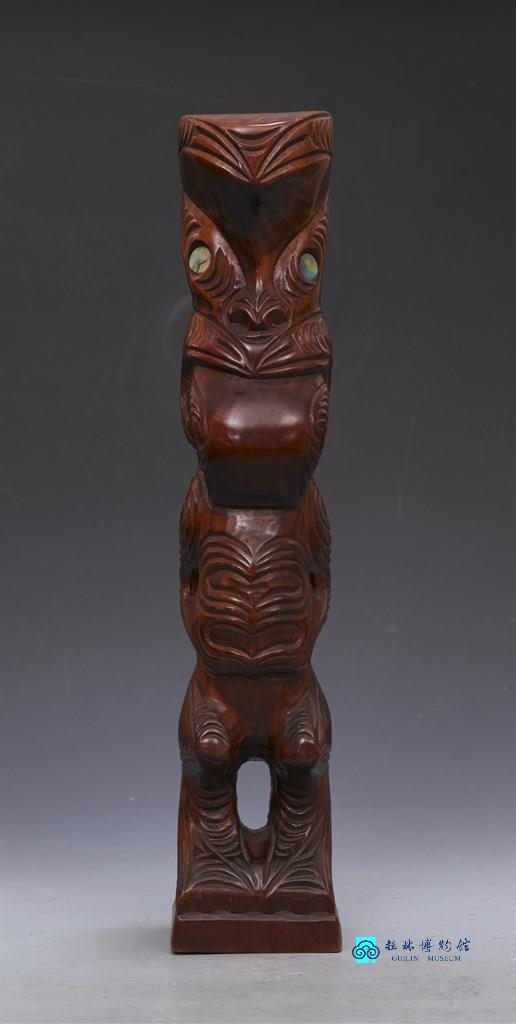Wooden Statue presented by Hastings of New Zealand in 1985
You may think that this wood carving is a little bit strange in modeling. Its tetragonal head is as wide as its shoulders. The big and round eyes are inlaid with shells. Its nose is between the two eyes and connected with its forehead. Its mouth is very big. The long tongue stretches out through the teeth exposed outside the corners of its mouth. Its two hands are crossed in front of the chest with three fingers stretched out respectively. Its feet are curved. What is the moral of this wood carving?
In fact, it is the image of ancestor believed and worshiped by aboriginal Maoris of New Zealand. There is an ancient legend about the Maori wood carving: Rua was the ancestor of the Maoris. One day, his beloved son was unfortunately kidnapped by demons of sea. The demons turned Rua's son into wood with dark witchcraft and made it an ornament erected in front of their chief's cave. Rua came to search for his son. After he came to the entrance to the cave and found the orderly arranged wooden statues, these statues started to talk successively. The demons fell asleep at night. Rua covered all the light-transmitting windows and doors of the cave and made the cave stay in utter darkness. Thus the demons still snored loudly in their sleep when the day broke. At that point, Rua quickly unveiled all covering, lashed out the demons, saved his son and returned in triumph. In the meantime, he brought back some wooden statues. Since then, they turned into the source of Maoris' wood carving art and the custom of praying for the grace of God by wearing such wood carving.



